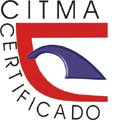Integrating GIS and remote sensing tools to identifying potential areas to host clay deposits in Las Tunas province
Keywords:
spatial analysis, Mining, geological information, Soluble Copper, clay potential, Chrysocolla, remote sensing, FlotationAbstract
Areas with potential to host clay deposits in Las Tunas province were identified by combining remote sensing data and geological information integrated in the Geographic Information System (GIS). Geological mapping, remote sensing and geospatial modeling techniques were used. The findings reveal a heterogeneous distribution of areas with moderate, high and very high potential to host clay deposits throughout the region, with significant concentrations in Manatí, Tunas, Jobabo, Colombia and Amancio municipalities. The integration of remotely sensed data and geological sources in a GIS environment are effective and feasible for this type of analysis.Downloads
References
Batista-González, R., Coutín-Correa, D. P., González-Castellanos, D. & Torres-Zafra, J. L. (2011). Valoración del potencial de las rocas y minerales industriales para el desarrollo municipal en la República de Cuba. Centro Nacional de Información Geológica.
Cortés, G. R. M., Kozievitch, V.F., Xavier, C. & Valenzuela, F. R. (2004). Propriedades cerâmicas de caulins da República de Cuba. Parte III. Caulim Dumañuecos. https://repositorio.uso.br/item/001398613
Fonseca, D., F. Barba, F., Callejas, P. & Recio, P. (2012). Aplicaciones de los minerales arcillosos de Cayo Guan, Cuba, como adsorbentes de metales pesados y materia prima cerámica. Boletín de la Sociedad Española de Cerámica y Vidrio, 51(5), 231-268. https://dialnet.unirioja.es/servlet/articulo?codigo=5623773
Girbert, Y. (2015). Evaluación de la expansividad de las arcillas en la ciudad de Pinar del Río. (Tesis de Maestría, Universidad de Pinar del Río). https://rc.upr.edu.cu/jspui/handle/DICT/1781
Instituto de Geología y Paleontología IGP. (2013). Léxico estratigráfico de Cuba. Centro Nacional de Información Geológica. Ministerio de Energía y Minas https://www.igp.minen.cu
Leyva-Osorio, L. A., & Leyva-Rodríguez, C. A. (2019). Minería artesanal y desarrollo local sostenible en Cuba. Revista Caribeña de Ciencias Sociales, 5(27). https://www.eumed.net/rev/caribe/2019/05/desarrollo-local-cuba.html
Martínez-Figueredo, A. (2016). Potencial Minero de las Tunas (p. 22). ONRM.
Mayet-Hechavarria, R. (2005). Depósitos de arcillas abigarradas en Cuba Occidental [Trabajo de diploma, Instituto Superior Minero Metalúrgico]. http://ninive.ismm.edu.cu/bitstream/handle/123456789/1343/TesisMayet.pdf?sequence=1
Mendoza, A., Solano, C., Palencia, D., García, D., Mendoza, A., Solano, C., Palencia, D. & García, D. (2019). Aplicación del proceso de jerarquía analítica (AHP) para la toma de decisión con juicios de expertos. Ingeniare. Revista chilena de ingeniería, 27(3), 348-360. https://doi.org/10.4067/S0718-33052019000300348
Romero-Lara, M., González, L., Rojas, Y.F. & Pérez, S.M. (2024). Potencialidades de la producción de ladrillos de barro cocido en Santiago de Cuba para viviendas de mampostería confinada. Revista Ciencia y Construcción, 5(2), 69. https://rcc.cujae.edu.cu/index.php/rcc/article/view/252
Published
How to Cite
Issue
Section
Copyright (c) 2024 Ariesky Mtnez Fdo

This work is licensed under a Creative Commons Attribution-NonCommercial 4.0 International License.
- Authors retain copyright and guaranteeing the right magazine to be the first publication of the work as licensed under a Creative Commons Attribution-NonCommercial that allows others to share the work with an acknowledgment of the work's authorship and initial publication in this journal.
- Authors may establish separate supplemental agreements for the exclusive distribution version of the work published in the journal (eg, place it in an institutional repository or publish it in a book), with an acknowledgment of its initial publication in this journal.
- Authors are allowed and recommended to disseminate their work through the Internet (e.g., in institutional telematic archives or on their websites) before and during the submission process, which can produce interesting exchanges and increase citations of the published work. (See The effect of open access)









